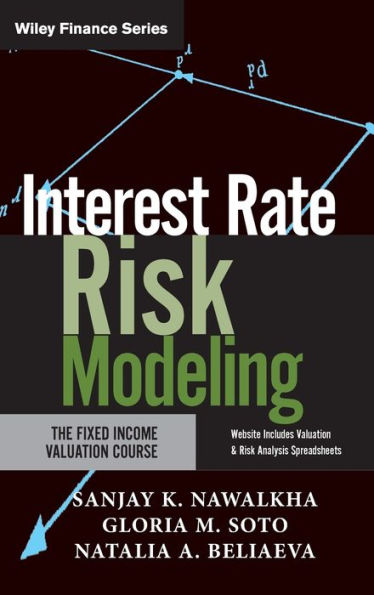Table of Contents
List of Figures.
List of Tables.
Chapter 1: Interest Rate Risk Modeling: An Overview.
Duration and Convexity Models.
M-Absolute and M-Square Models.
Duration Vector Models.
Key Rate Duration Models.
Principal Component Duration Models.
Applications to Financial Institutions.
Interaction with Other Risks.
Notes.
Chapter 2: Bond Price, Duration, and Convexity.
Bond Price under Continuous Compounding.
Duration.
Convexity.
Common Fallacies Concerning Duration and Convexity.
Formulas for Duration and Convexity.
Appendix 2.1: Other Fallacies Concerning Duration and Convexity.
Notes.
Chapter 3: Estimation of the Term Structure of Interest Rates.
Bond Prices, Spot Rates, and Forward Rates.
Term Structure Estimation: The Basic Methods.
Advance Methods in Term Structure Estimation.
Notes.
Chapter 4: M-Absolute and M-Square Risk Measures.
Measuring Term Structure Shifts.
M-Absolute versus Duration.
M-Square versus Convexity.
Closed-Form Solutions for M-Square and M-Absolute.
Appendix 4.1: Derivation of the M-Absolute and M-Square Models.
Appendix 4.2: Two-Term Taylor-Series-Expansion Approach to the M-Square Model.
Notes.
Chapter 5: Duration Vector Models.
The Duration Vector Model.
Generalized Duration Vector Models.
Appendix 5.1: Derivation of the Generalized Duration Vector Models.
Notes.
Chapter 6: Hedging with Interest-Rate Futures.
Eurodollar Futures.
Treasury Bill Futures.
Treasury Bond Futures.
Treasury Note Futures.
Appendix 6.1: The Duration Vector of the Eurodollar Futures.
Appendix 6.2: The Duration Vector of the T-Bond Futures.
Notes.
Chapter 7: Hedging with Bond Options: A General Gaussian Framework.
A General Gaussian Framework for Pricing Zero-Coupon Bond Options.
The Duration Vectors of Bond Options.
The Duration Vector of Callable Bonds.
Estimation of Duration Vectors Using Non-Gaussian Term Structure Models.
The Durations of European Options on Coupon Bonds and Callable Coupon Bonds.
Chapter 8: Hedging with Swaps and Interest Rate Options Using the LIBOR Market Model.
A Simple Introduction to Interest Rate Swaps.
Motivations for Interest Rate Swaps.
Pricing and Hedging with Interest Rate Swaps.
Forward Rate Agreements.
Pricing and Hedging with Caps, Floors, and Collars Using the LIBOR Market Model.
Interest Rate Swaptions.
Numerical Analysis.
Notes.
Chapter 9: Key Rate Durations with VaR Analysis.
Key Rate Changes.
Key Rate Durations and Convexities.
Risk Measurement and Management.
Key Rate Durations and Value at Risk Analysis.
Limitations of the Key Rate Model.
Appendix 9.1: Computing Key Rate Risk Measures for Complex Securities and under Maturity Mismatches.
Notes.
Chapter 10: Principal Component Model with VaR Analysis.
From Term Structure Movements to Principal Components.
Principal Component Durations and Convexities.
Risk Measurement and Management with the Principal Component Model.
VaR Analysis Using the Principal Component Model.
Limitations of the Principal Component Model.
Applications to Mortgage Securities.
Appendix 10.1: Eigenvectors, Eigenvalues, and Principal Components.
Appendix 10.2: Computing Principal Component Risk Measures for Complex Securities and under Maturity Mismatches.
Notes.
Chapter 11: Duration Models for Default-Prone Securities.
Pricing and Duration of a Default-Free Zero-Coupon Bond under the Vasicek Model.
The Asset Duration.
Pricing and Duration of a Default-Prone Zero-Coupon Bond: The Merton Framework.
Pricing and Duration of a Default-Prone Coupon Bond: The First Passage Models.
Appendix 11.1: Collin-Dufresne and Goldstein Model.
Notes.
References.
About the CD-ROM.
Index.




